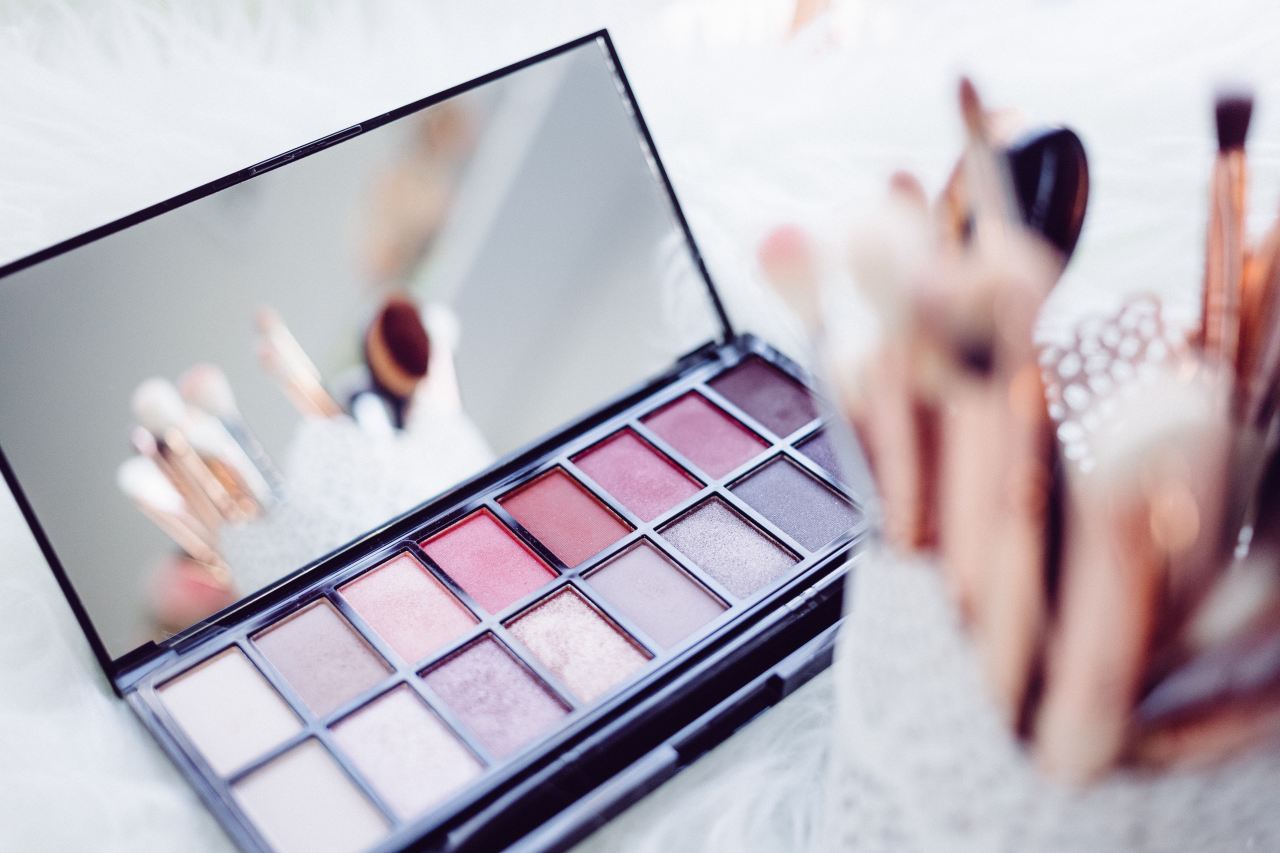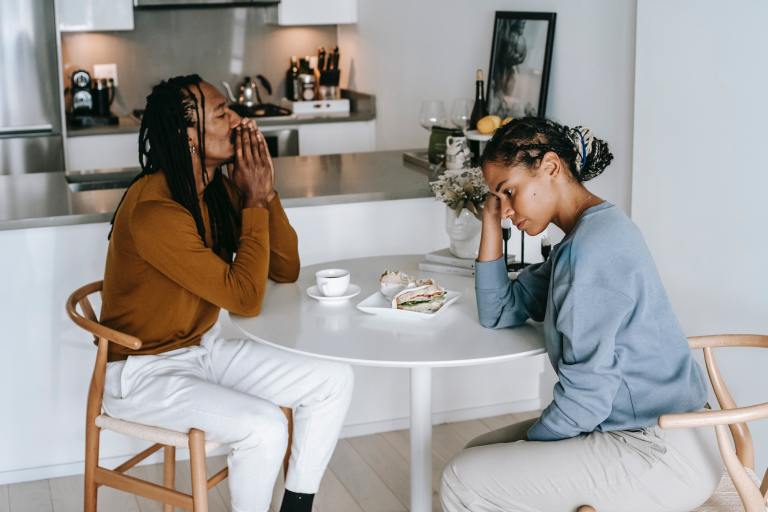An Honest Letter About The Beauty Industry From A Woman In Her Twenties
I'm a 29-year-old woman, and for more days than I'd like to admit, I've found myself drowning in the relentless, existential pressure to perfect my exterior from head to toe.

I’m a 29-year-old woman, and for more days than I’d like to admit, I’ve found myself drowning in the relentless, existential pressure to perfect my exterior from head to toe. I can only speak to my experience, without judging someone else’s, while hoping to connect with anyone that can relate.
When I can disconnect from my phone, there are moments where I don’t give my looks a second thought. I don’t worry about wrinkles until I’m bombarded with advertisements paid for by the beauty industry, urging me to commit my time to reverse the effects of aging. Then social media shoves their message out even stronger with edited and altered visuals. And just when I think it’s over, my friends are there to give the messaging one final heave in my direction.
Suddenly, I look at my reflection and pick apart flaws until I find more. I second guess everything, wondering how I can fix the way I look—my face, my body, everything. I hate everything I see—my lips, cheeks, eyes, nose, skin, stomach, legs, arms, chest, neck. I scan my body up and down until I’m running in circles. Every flaw I suddenly notice is more obscene than I’ve ever realized before. I’m overwhelmed, and I’m drowning.
But then I have a moment where I’m able to swim up from the ripple, breakthrough, and come up for air. I remember the words of the inspirational Brené Brown: “Time is a big, precious, unrenewable resource.”
I don’t want to waste any time, and that starts with making a conscious effort to not obsess over how I look because it’s a game without a winner. The idea of perfect is just that—an idea; it’s not real. And the more beauty industries push us towards that game, it continues to be a toxic force that feeds from insecurities, self-hate, and sexism.
Hold up, sexism?
Yes.
Women have always fallen on the wrong side of double standards, pushed to focus on exterior alterations, motivated by men. Plastic surgery has been around for approximately 200 years, but did you know that plastic surgery is a male-driven industry? Men make up 85% of board-certified plastic surgeons. In 2019, there were 18.1 million surgical and minimally invasive procedures; 92% were for women, and 8% were for men.
The top surgical procedure: breast augmentation (299,715 procedures).
The top cosmetic minimally-invasive procedure: Botulinum toxin type A aka Botox (7.7 million procedures).
Then there’s the financial aspect of if. According to Byrdie, “the average woman spends about $313 per month on her appearance. This adds up to $3756 per year or $225,360 over the course of a lifetime.”
So with all of the progression toward gender equality, women are still burning through their finances to meet impossible beauty standards that change with the wind—controlled by men.
Do you see a trend here?
Have you ever wondered why we have the phrase silver fox to describe an older man without any labeling counterpart for women? That’s because men are allowed to age and women are not. Society only romanticizes wrinkles and grays if they’re on a man. If a woman dares to age, she must do everything in her power to try and reverse it. That’s why most beauty products are aimed at women, exploiting the fact that women face this pressure while increasing the products’ odds to gain profit.
It’s an ugly revelation: the sexist commitment to fulfilling men’s visual desires of women—joined forces with the beauty industry, social media, and ironically, women.
And you can’t blame women for wanting to make these changes because they’re rewarded for focusing on their looks by both men and society. They’re rewarded and distracted with attention, praise, and admiration.
So how did it get so out of hand in 2021? With smartphone applications and a constant refreshment of image filters, surgical and minimally invasive procedures became more normalized. The birth of social media bred an entirely new pressure to perfect lips, cheeks, nose, skin, and body figure.
And it’s dangerous. It’s dangerous for anyone that devotes their life to appeasing the perception of someone else while simultaneously abandoning their truth. It’s dangerous that the age bracket to perfect beauty is getting younger and younger every year. It’s not only impacting women now, it’s impacting young girls too. The 18.1 million surgical and minimally invasive surgeries mentioned above included 223,000 procedures done on teenagers aged 13-19.
I’m not here to say one choice is right and the other is wrong. I’m challenging you to look at how much of your resources are being drained financially and mentally on looks—and how that impacts the way you see yourself. When you’re doing something to yourself for yourself, that’s self-love. But when you make decisions motivated by others’ opinions, you’re going to deplete your resources before you have a chance to use them anywhere else.
Like everything, it comes down to balance. When you max out your resources on looks, there’s no energy left to support the health of your mind and body—two power sources naked to the human eye.
Through years of growth, I had to evolve to shift my focus and see how harmful my behavior was in previous years. After years of disliking myself, I’ve gotten to a place where I make an effort to focus less on how I look. This is not because I don’t care about how I look; it’s because I’ve seen firsthand how much more powerful I am when I feel good versus when I look good. I’m able to treat myself and therefore treat others more kindly. Human beings are only given so much energy to spend, so when we devote it all outside, we don’t even touch the inside.
I’ve arrived at a place where looking good falls below feeling good on the totem pole—and I want every woman to know that kind of power is in their reach. It takes constant practice, and constantly ignoring and shutting out the commercialized pressures from the beauty industry.
Sure, needs and wants differ between people. Still, I wonder how things might shift if every woman knew how all of this pressure to meet unrealistic and ever-changing beauty standards began. Ultimately everyone is entitled to make whatever changes they want to themselves and budgeting their resources where they see fit. But if more women noticed the toxic metamorphosis that the bias emphasis on women’s looks has gone through, perhaps our collective motivation might shift.
I can’t help but fantasize about a society where we praise mental stability as much as we idolize bikini photos.
Can you imagine that for a second?
Lexie Kite and Lindsay Kite said it best: “Your body is an instrument, not an ornament.”
You’re meant to feel things, not look a certain way to appease the gaze of others.
When you feel the pressure to meet unrealistic beauty standards, know that you don’t have to conform so that you look like everyone else. Rebel so that you can look exactly like you—the one and only—and love every authentic experience of your evolution.
Don’t forget, you shine brightest from the inside.




